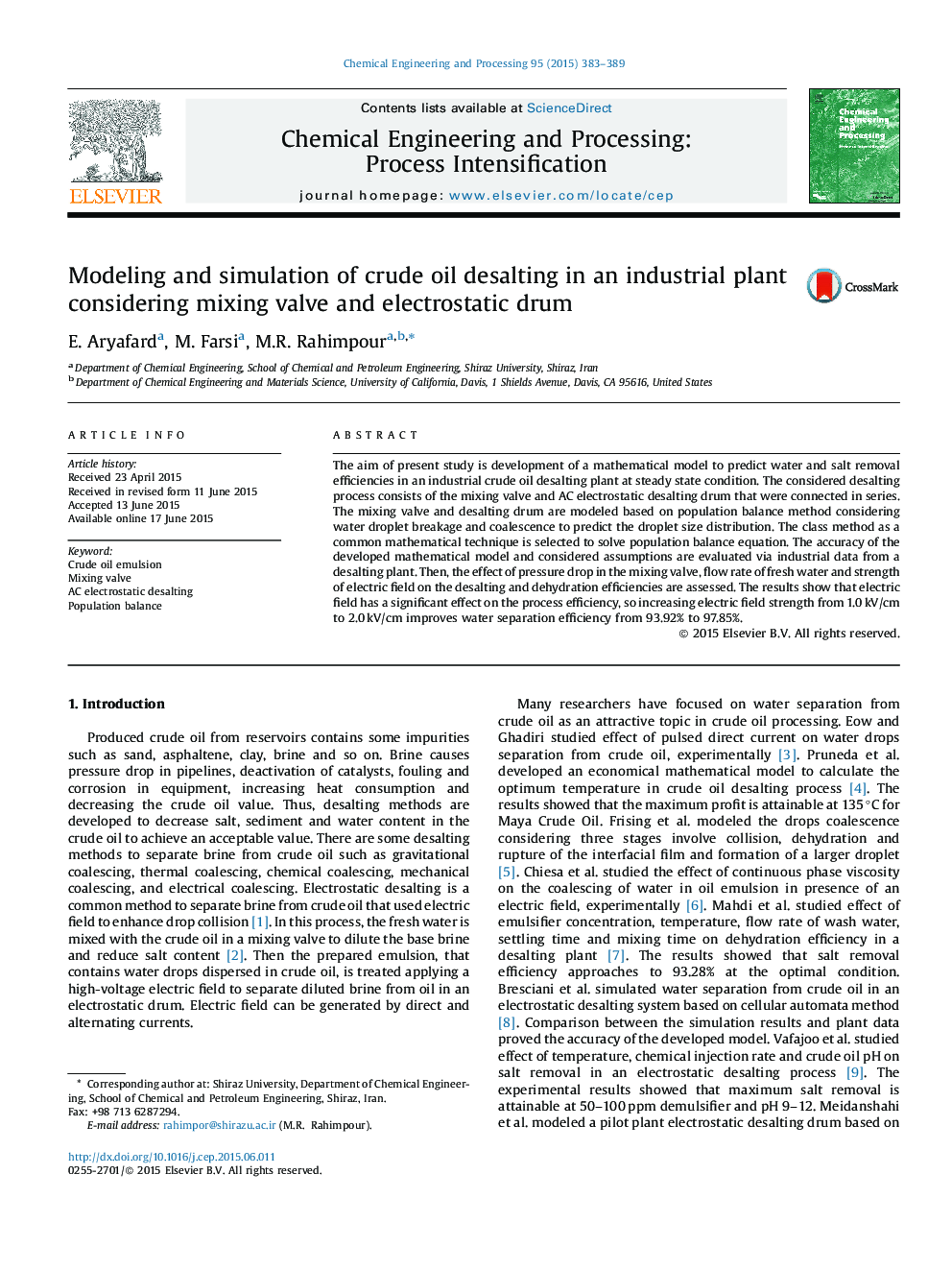| کد مقاله | کد نشریه | سال انتشار | مقاله انگلیسی | نسخه تمام متن |
|---|---|---|---|---|
| 688051 | 1460082 | 2015 | 7 صفحه PDF | دانلود رایگان |
• A new steady state modeling of crude oil desalting is carried out.
• The desalting plant is considered as mixing valve and AC electrostatic desalting drum.
• The desalting drum is modeled in two sections based on the electric field.
• The effect of mixing valve pressure drop, fresh water rate and electric field strength is investigated.
• The results of modeling is compared with industrial data.
The aim of present study is development of a mathematical model to predict water and salt removal efficiencies in an industrial crude oil desalting plant at steady state condition. The considered desalting process consists of the mixing valve and AC electrostatic desalting drum that were connected in series. The mixing valve and desalting drum are modeled based on population balance method considering water droplet breakage and coalescence to predict the droplet size distribution. The class method as a common mathematical technique is selected to solve population balance equation. The accuracy of the developed mathematical model and considered assumptions are evaluated via industrial data from a desalting plant. Then, the effect of pressure drop in the mixing valve, flow rate of fresh water and strength of electric field on the desalting and dehydration efficiencies are assessed. The results show that electric field has a significant effect on the process efficiency, so increasing electric field strength from 1.0 kV/cm to 2.0 kV/cm improves water separation efficiency from 93.92% to 97.85%.
Journal: Chemical Engineering and Processing: Process Intensification - Volume 95, September 2015, Pages 383–389
